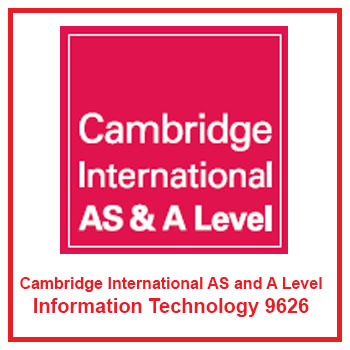About A Level IT (9626)
The Cambridge International AS & A Level Information Technology program is designed to equip learners with the skills and knowledge needed for both Higher Education courses in Information Technology and the demands of employers. Information Technology (IT) involves the application of technology to process information, and in a rapidly evolving IT landscape, individuals require technological and information literacy skills, including the ability to gather, process, and manipulate data.
The impact of IT on society is substantial, particularly with the increasing connectivity of businesses and households to communication networks like the internet. This trend underscores the growing need for individuals who possess a deep understanding of these new technologies.
The syllabus encourages learners to become effective and discerning users of IT. It facilitates the development of a broad range of IT skills, knowledge, and understanding. Learners delve into the structure and usage of IT systems across various organizations, including the exploration of diverse computer networks. This approach enables learners to grasp IT system life cycles and their implications for the workplace. Moreover, the syllabus fosters an awareness of the broader societal impact of IT.
At the A Level, learners also engage in the study of simple programming for the web, specifically relevant to their individual use of IT. In essence, the program aims to prepare learners not only for academic pursuits in Information Technology but also for practical application in real-world scenarios, ensuring their readiness for both educational and professional pathways.


